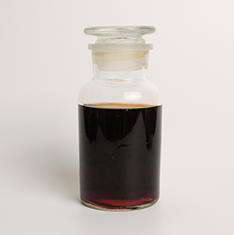Catalase
- Home
- Products & Applications
- Catalase

Catalase
Description:
Catalase is produced by submerged fermentation of Aspergillus niger. Catalase will degrade hydrogen peroxide into water and oxygen, and it is commonly used in the textile, food, beer, and paper industries.
Technical information:
- Available in liquid (brown) 50,000 to 200,000 u/ml.
- Temperature range: 20-60℃ (Optimum temperature: 40 to 55℃).
- pH range: 5.0-9.5 (Optimum pH: 6.0-8.0)
- Unit definition: The amount of enzyme needed to liberate 1 μmol of hydrogen peroxide in one minute at a pH of 7.0 at 30℃ (Standard: LDZJ 03.05-2010)
Mode of Action:
Pending
Uses:
- Textiles
Catalase will shorten the processing time by removing residual oxygen after bleaching and will reduce water utilization and consumption of energy, making it an ecofriendly product.
Recommended dosage: 0.06-0.1 g/L solution based on the activity of 50,000U/ML
- Food and dairy
Catalase works as an antioxidant by neutralizing hydrogen peroxide. It is recommended to deactivate hydrogen peroxide when it is used as a bleacher or as a disinfectant.
Recommended dosage: 50 to 150 ml/ton fresh raw material at 30 to 45℃ for 10 to 30 minutes. Based on 50,000 u/L. No pH adjustment is required.
- Beer and Gluconate industries
In beer storage and sodium gluconate, the recommended dosage is 20-100 ml/ton at room temperature. In dry matter with 30-35% concentration, the recommended dosage is 2,000 to 6,000 ml/ton at a pH of 5.0 at 30 to 55℃ for 30 hours. Based on 50,000 u/ML.
In sodium gluconate production, catalase is used for the de-lignification of corn cob residue from which sodium gluconate can be obtained, a product with multiple applications in different industries. As a concrete retarder in construction; in bleaching, cleaning, and degreasing fibers in textiles; and as a water corrosion inhibitor in water systems.
- Pulp and papermaking industries
In these industries, the main use is the degradation of residual bleaching, and the recommended dosage is 100 to 300 ml/ton of dry pulp at 40 to 60℃ for 30 minutes. Based on 50,000 u/ML. No pH adjustment is required.ML
Packaging, Storage & Handling
- Liquid: Plastic drums of 22; 200; 840 and 1,000 L.
- Powder: 20 kg cartons; 25 kg bags and 25 kg drums.
- Storage & handling: Avoid exposure to direct sunlight; keep in clean, cool, and dry place.
